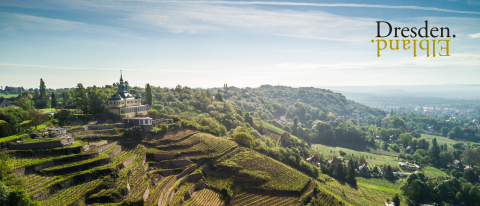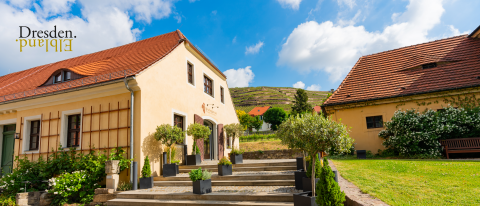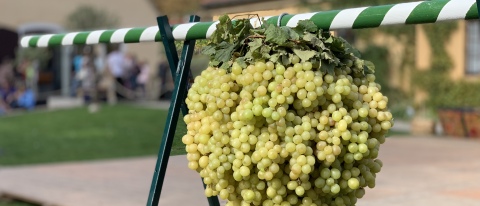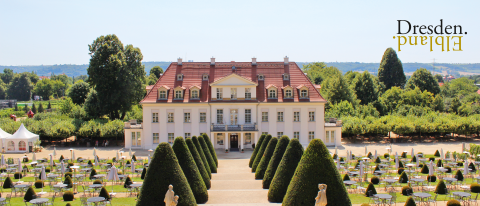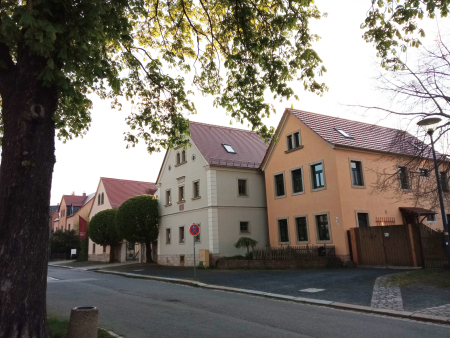Historic village green Serkowitz
The Platzgassendorf was probably founded in the 12th century in the course of Frankish colonisation on the height of an old Elbe crossing at the lower reaches of the Lößnitzbach stream and was mentioned in 1315 as Cerakuicz.
The farmstead initially belonged to the Seußlitz nunnery and then passed to Dresden council.
It was dissolved in the middle of the 15th century. The village itself originally comprised 12 farmsteads. From the 16th century onwards, individual house plots without significant land ownership were created by division, and their owners were often craftsmen or winegrowers.
The villange green were owned by the old community of the "Fünfzehner" (Fifteen), which was formed by 14 farms and the Brauschenkgut (Brewery Estate), until it was dissolved in 1843.
The fields belonging to Serkowitz with fertile arable land lay below the Meißner Straße. Meadows and pastures were located in the Elbaue valley.
Vineyards had been cultivated since the 14th century at the latest. The municipal seal, first documented in 1737, shows a hanging grape.
Like the village of Radebeul, Serkowitz also belonged to Kaditz in terms of school and church. The Weintraube stop has connected Serkowitz to the railway network since 1838. At the end of the 19th century, the first industrial enterprise was established - this later became the Otto Baer paint factory. On 1 January 1905, the village with 2800 inhabitants was incorporated into Radebeul.
